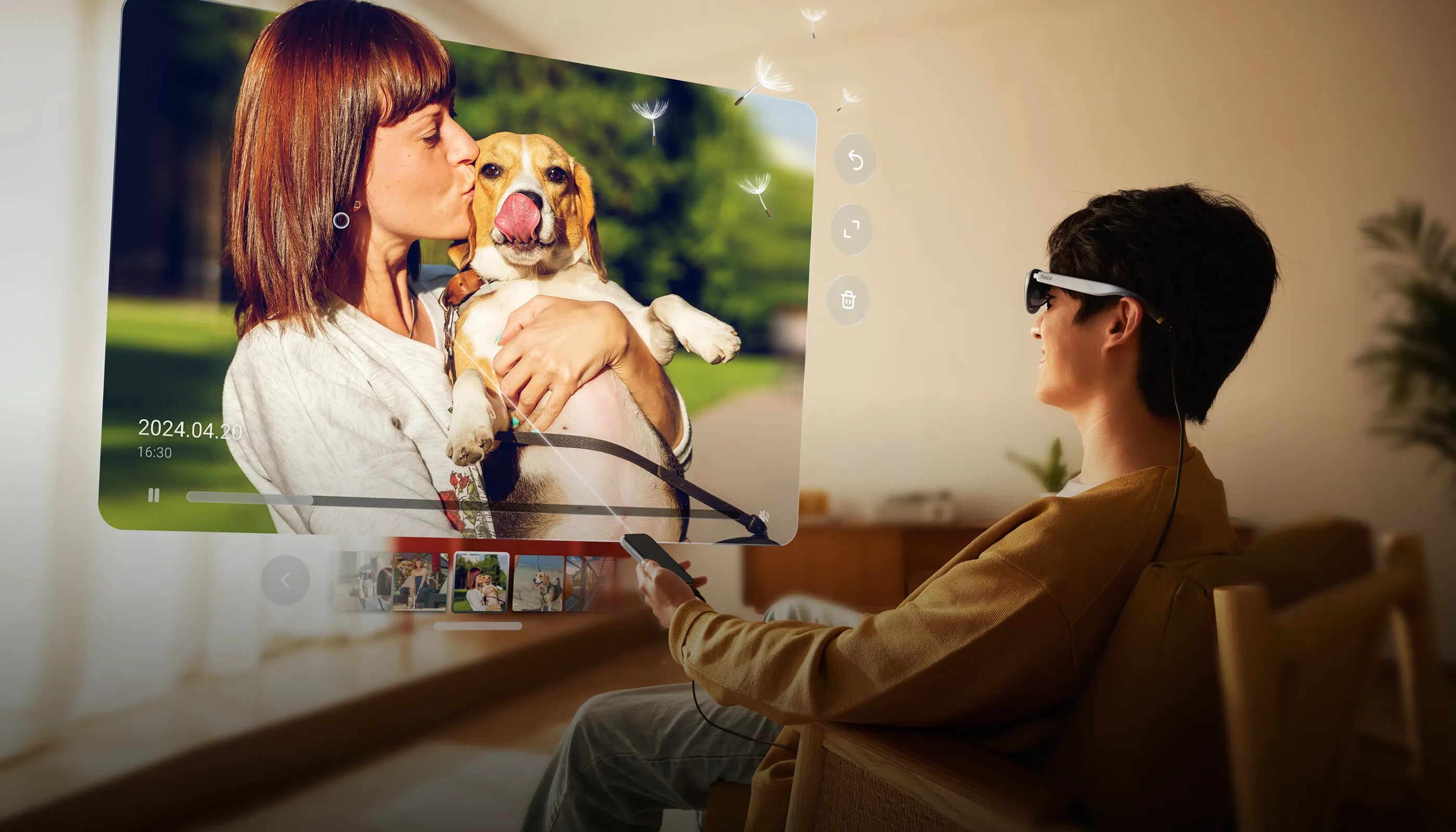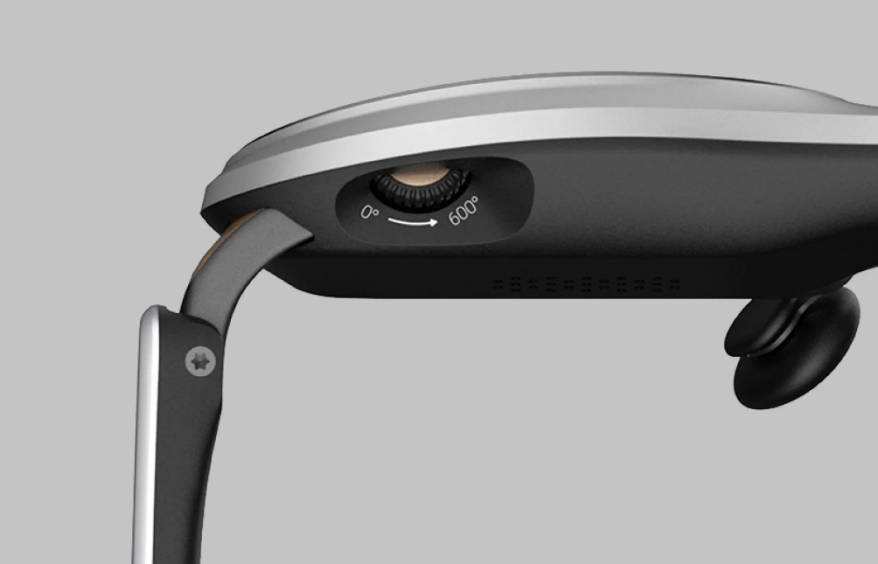
The advent of Augmented Reality (AR) has ushered in a new era in technology, blending the digital with the physical in ways previously unimaginable. It's a world where information and entertainment are not just consumed but experienced, making AR devices not just tools but gateways to new realities. As we delve into the world of AR, we find an array of devices like AR TV, AR smart glasses, and HUD eyewear that are not only innovative but are reshaping our interaction with technology in profound ways.
Augmented Reality (AR) devices, including AR TV, AR smart glasses, and HUD eyewear, are revolutionizing the way we interact with the world. These innovative gadgets overlay digital information onto the physical world, creating a blended experience that's both exciting and informative. From immersive gaming to advanced healthcare applications, AR technology is paving the way for a future where digital and real-world experiences merge seamlessly.
Understanding the Technology Behind AR Devices
At the heart of every AR device lies a combination of sophisticated software and hardware. These elements work together to analyze the environment and overlay digital information in real-time. Advanced sensors, cameras, and processors are the backbone of AR technology, enabling devices like AR smart glasses to interpret and augment our physical surroundings with accuracy and speed.
Types of AR Devices
The world of AR devices is diverse, with each type offering unique experiences. Head-Mounted Displays (HMDs) provide immersive experiences, enveloping users in a digital world. AR glasses and HUD eyewear offer a more subtle, integrated experience, blending digital overlays with the user's natural vision. Mobile AR apps bring augmented reality to smartphones, making it accessible to a wider audience.
AR in Gaming and Entertainment
AR has significantly impacted the gaming and entertainment industry, offering experiences that are both engaging and interactive. Games like Pokémon Go have shown the potential of AR in creating immersive worlds that blend with our own. In the film and television industry, AR offers new ways for storytelling and viewer engagement, especially with the advent of AR TV.

AR in Education and Training
AR devices have found a significant place in education and training, offering interactive and immersive learning tools. They provide simulations and real-world applications that enhance the learning experience, making complex concepts easier to grasp. For instance, medical students can use AR for detailed anatomical studies without the need for real cadavers.
AR in Healthcare
In healthcare, AR devices are revolutionizing procedures and patient care. Surgeons use AR for precision in operations, and it's also being used for patient education and rehabilitation, offering interactive and personalized care plans.

AR in Retail and Marketing
The retail and marketing sectors are harnessing AR to create unique customer experiences. Virtual try-ons and AR showrooms are becoming increasingly popular, offering customers a new way to engage with products. This technology also helps in creating personalized marketing campaigns that resonate with individual preferences.
Industrial Applications of AR
In the industrial sector, AR devices assist in manufacturing, assembly lines, and maintenance. They offer real-time guidance and information, improving efficiency and reducing errors in complex processes.
The Future of AR Devices
The future of AR devices looks promising, with continuous advancements in technology. Experts predict a world where AR devices are as common as smartphones, deeply integrated into our daily lives, from personal entertainment to professional tasks.
Challenges and Limitations of AR Devices
Despite their potential, AR devices face several challenges. Technical limitations, such as battery life and processing power, are ongoing concerns. Additionally, ethical and privacy issues need addressing to ensure these devices are used responsibly and respectfully.
User Experience with AR Devices
User experience is critical for the success of AR devices. Developers focus on creating intuitive interfaces and designs that cater to a wide range of users. User feedback is essential in refining these devices, ensuring they meet the needs and expectations of their audience.
Investing in AR Technology
The AR market is ripe with opportunities for investors. With rapid advancements and growing consumer interest, investing in AR technology can be lucrative. However, it's crucial to understand the market trends and identify the sectors where AR has the most potential.
AR Devices in Everyday Life
AR devices are gradually integrating into our everyday lives. From home automation to personal assistants, these devices enhance our daily activities, making them more efficient and enjoyable.
Security and Privacy in AR Devices
As with any technology, security and privacy are paramount in AR devices. Developers are constantly working on enhancing data protection measures to safeguard user information and ensure privacy.
Sustainable Development and AR
Sustainability is a growing concern in the development of AR devices. This includes using eco-friendly materials, optimizing energy efficiency, and designing devices for longevity. Moreover, AR itself can be used to promote environmental awareness, showcasing the impact of human actions on the environment through immersive experiences.
Global Market for AR Devices
The global market for AR devices is expanding, with different regions showing varied trends. Leading companies are continuously innovating, pushing the boundaries of what's possible with AR technology.
Educational Benefits of AR Devices
The educational benefits of AR devices are vast. They offer new ways of learning, making education more interactive and effective. Numerous case studies have shown the positive impact of AR in educational settings.
AR Devices: A Conclusion
AR devices are more than just a technological novelty; they represent a significant shift in how we interact with the world. As we look towards the future, the possibilities of AR technology are limitless, offering exciting prospects for various sectors.
FAQs on AR Devices
1. How do AR devices impact the gaming industry?
AR devices have revolutionized gaming, providing an immersive and interactive experience. They blend physical and digital worlds, allowing players to engage with games in a completely new way. From location-based games that encourage exploration, like Pokémon Go, to home-based AR gaming that transforms living spaces into gaming environments, AR has opened up numerous possibilities for game developers and players alike.
2. Can AR devices be used in professional training?
Absolutely! AR devices are increasingly used for professional training across various industries. They offer realistic simulations, enabling trainees to practice skills in a safe and controlled environment. This is particularly beneficial in fields like aviation, healthcare, and manufacturing, where hands-on experience is crucial but real-world training can be risky or costly.
3. What are the privacy concerns with AR technology?
AR technology raises significant privacy concerns, primarily related to data collection and surveillance. As AR devices can capture real-time data about users and their environments, there is a risk of unauthorized data usage or breaches. Ensuring robust data protection measures and clear user consent protocols are essential to address these concerns.
4. How do AR devices enhance the retail shopping experience?
AR devices enhance the retail experience by offering virtual try-ons and immersive showrooms, allowing customers to visualize products in a realistic manner without physically interacting with them. This not only provides a novel shopping experience but also helps in making informed purchase decisions, thereby increasing customer satisfaction and engagement.
5. Are there sustainable practices in AR device development?
Yes, sustainability is becoming a key focus in the development of AR devices. This includes using eco-friendly materials, optimizing energy efficiency, and designing devices for longevity. Moreover, AR itself can be used to promote environmental awareness, showcasing the impact of human actions on the environment through immersive experiences.
6. What future advancements are expected in AR technology?
Future advancements in AR technology are expected to include more seamless integration with daily life, improved user interfaces, and enhanced realism. This could mean lighter, more comfortable wearable AR devices, AR integration in common household items, and even more advanced AR in mobile devices. The potential for AR to interact more fluidly with AI and IoT devices also holds exciting possibilities for a more connected and interactive future.



